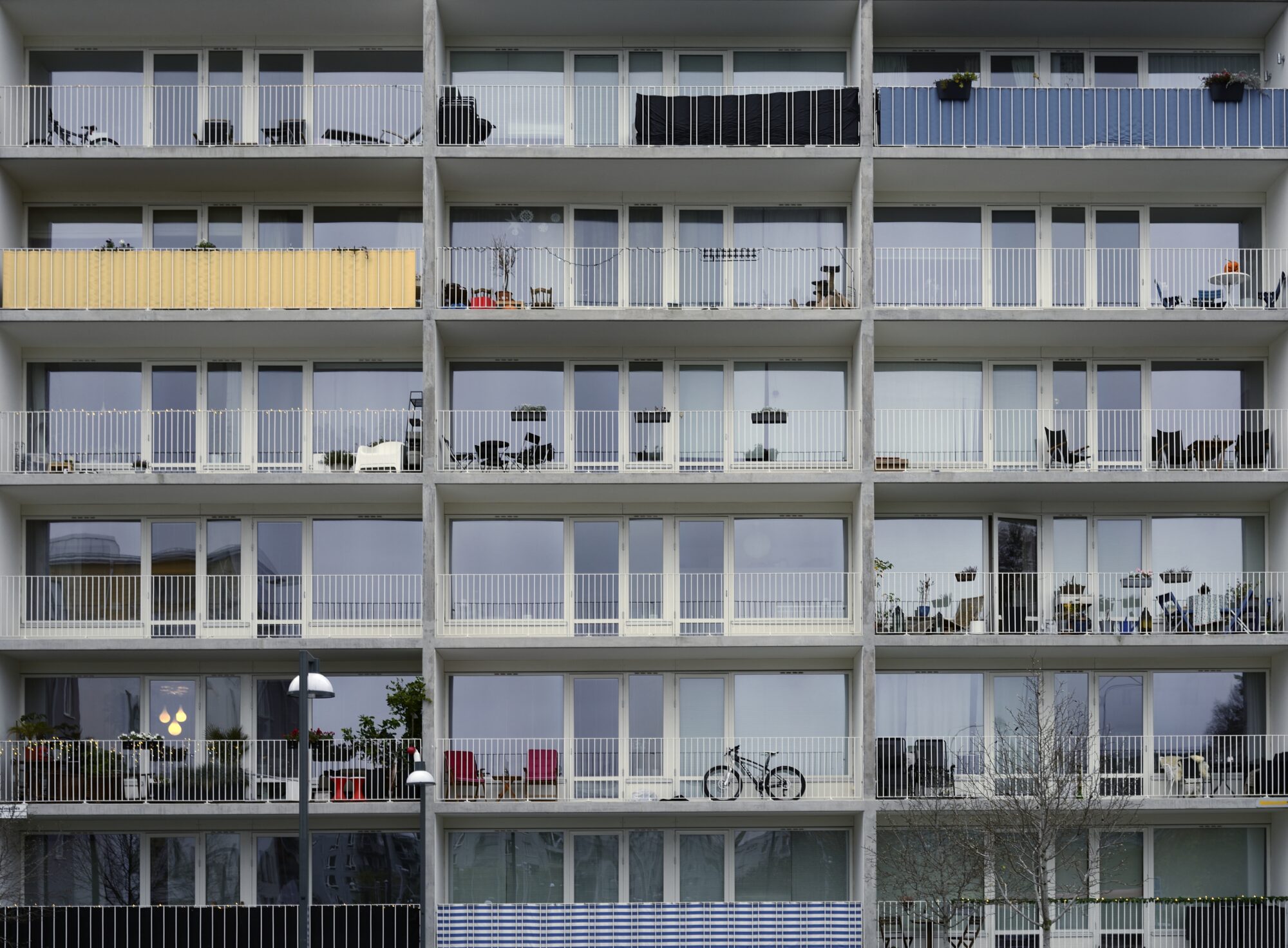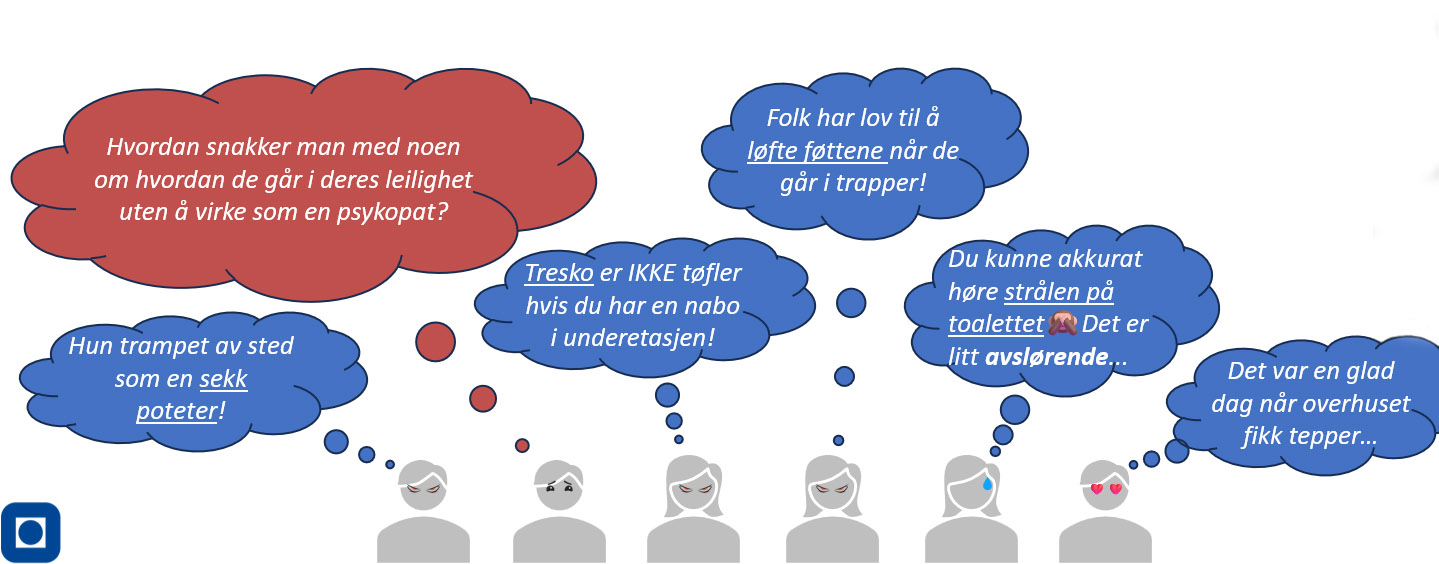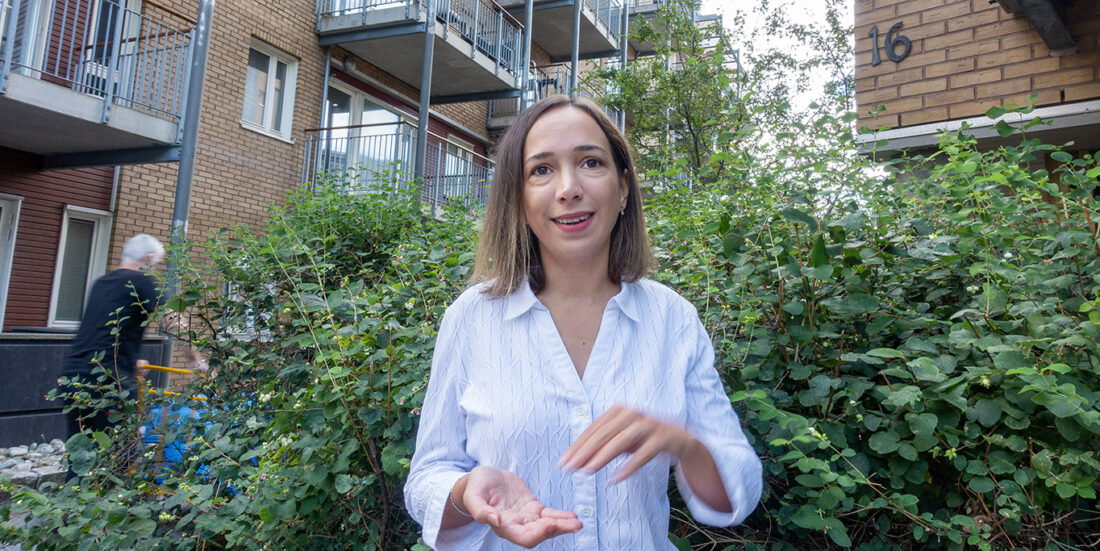If you can hear your neighbour snoring, there’s something wrong with the building you live in
Does it sound like the guy in the apartment above you keeps dragging a sack of potatoes across his room? It’s not his fault –the building you live is not sufficiently soundproofed.
The short version
Neighbour noise is a source of stress that can affect our emotions, privacy, health, and relationships with others. Many people find it more disturbing than traffic noise.
To protect and assist consumers when buying or renting a home, researchers believe we need a labelling system with sound classes for housing. This should be included in property condition reports, similar to energy labelling.
Researchers at NTNU and Aalborg University have analyzed over 500 posts and social media comments about how apartment residents experience neighbor noise.
Footsteps, voices, laughter, loud music, and sounds from toilets disturb and annoy many people. Complaints that go unresolved can lead to desperation, anger, and harassment.
Building acousticians emphasize that the problems are caused by the buildings themselves. They warn that today’s urban densification strategies could create future issues if acoustic quality is not given greater priority.
“Many people get annoyed by the sound of footsteps. Voices and laughter are also high on the list of noises that bother us, followed by loud music and sounds from the bathroom,” said NTNU researcher Ayça Şentop Dümen.
Acoustic labelling
Dümen is an expert in building acoustics, meaning how sound moves in different spaces and environments. In collaboration with Professor Birgit Rasmussen at Aalborg University in Denmark, she has analyzed how people living in apartments experience noise from their neighbours. Both believe we need a labelling scheme for housing acoustics, and that – like energy labelling – it should be included in homebuyer surveys.
“This is all about protecting consumers who are going to buy or rent a home,”said Dümen, who is an associate professor at NTNU’s Department of Civil and Environmental Engineering.
Noise problems in buildings
Noise problems are particularly common in older apartments, and especially in wooden buildings where there can be a lot of impact noise on floors. However, even in new buildings, many people say that they are more bothered by noise from their neighbours than by traffic noise.

For many people, buying an apartment is the biggest investment of their lives. You might not notice that the building isn’t well soundproofed until the quiet neighbour moves out and the new one who loves loud punk music moves in. Photo: Colourbox
“At the same time, the Norwegian architecture strategy favours densification. We can expect more problems in the future if we do not place greater emphasis on the quality of acoustics,” Dümen said.
Noise breeds stress and pressure
Neighbour noise is a source of stress that can affect our emotions, privacy and relationships with others. Research also shows that it can be linked to an increased risk of anxiety, stress, depression, sleeping problems, headaches and other health problems.
It can be difficult for neighbours to resolve noise-related conflicts. Acoustic labelling can protect particularly vulnerable groups – not only against their neighbour’s sounds – but also against the worry of being overheard themselves.
At the same time, the Norwegian architecture strategy favours densification. We can expect more problems in the future if we do not place greater emphasis on the quality of acoustics.
Uproar on Facebook
The neighbour noise study began with newspaper articles in the Danish newspapers Politiken and Jyllandsposten. The topic was the lack of information about acoustic performance in apartments. It caused an uproar in the newspapers’ comment sections and on Facebook when a labelling scheme was recommended that would rate a dwelling’s acoustic performance in connection with house sales.
When the number of comments surpassed 700, the two building acousticians decided to take a deeper dive into how people experience neighbour noise.
Here are some of their findings:
- Neighbour noise is the unwanted sharing of information that includes private matters, certain types of conversation, and parenting practices.
- This sharing of information can feel uncomfortable – for both parties.
- Sounds can cause irritation for the listener and anxiety for the person being overheard.
- Complaints that go unaddressed can lead to desperation, anger and harassment.
- Neighbour noise can divide generations and ethnic groups.
- Poor soundproofing affects some groups more than others, particularly vulnerable low-income families, shift workers and families with children.
- Many people wanted a labelling scheme with sound classification so they could make informed choices.
Humour and too much information
The discussions became especially heated about deeply private sounds from the bedroom and the bathroom. Many people saw the funny side, but some were also concerned. One person wrote: “If I can hear my neighbours, it means they can hear me too.” Another thought it sounded like the neighbour in the apartment above was renovating their kitchen every single evening.
Some people wrote that they don’t mind babies, but that older children should be kept quieter. Dümen says these types of comments indirectly cast doubt on parents’ ability to raise their children.
- You might also like: What can we learn from a 100-year-old housing experiment?
“Much of the problem is about becoming party to information we do not want, which makes us imagine what others are like based on what we hear. But we have the right to decide how much private information we want to share and how we wish to appear to our neighbours,” said Dümen.

Newspaper articles about neighbour noise sparked debate. The researchers organized and analyzed nearly 500 comments from 378 people across Denmark. Translations, from left: 1) She stomps away like a sack of potatoes; 2) How do you talk to someone about how they walk in their apartment without seeming like a psychopath? 3) Wooden clogs are not slippers if you have a neighbour below your apartment, 4) People are allowed to lift up their feet when they go up stairs, 5)You could hear the toilet flushing, which was a little revealing, 5) It was a happy day when the apartment overhead got carpets. Illustration: Ayca Sentop Dumen
Lacking final inspection
Sound spreads like waves through air and materials. Sound waves always find a way – not just straight through a wall, but also through floors, ceilings, pipes, or through holes and cracks. Immediate neighbours in a building share building components which can easily transmit sound if all the details have not been properly executed.
Regardless of whether it’s footsteps, the toilet flushing, or talking, construction materials can vibrate and transmit sound.
Dümen says the problem is that there is no strict inspection scheme in place to ensure that any requirements are actually met – not during construction nor when measurements are taken upon completion.
Car tyres and washing machines are labelled
For many people, buying an apartment is the biggest investment they are ever going to make. Uneven tiles and shoddy paint jobs are easy to see. However, you might not notice that the building is poorly soundproofed until the quiet neighbour moves out and is replaced by a new one who loves to play loud music.
Dümen points out that we are generally very aware of our rights as consumers.
“If there is something wrong with a new T-shirt, we know we can return it and get our money back. If we buy new car tyres or a dishwasher, they come with noise labelling. But this is not the case with apartments,” Dümen said.
Using minimum requirements

Acoustic labeling of homes can protect particularly vulnerable groups. – Not only from the sounds of neighbours, but also from the stress of being overheard yourself, says sound expert and associate professor at NTNU, Ayça Şentop Dümen. Photo: Sølvi W. Normannsen
Dümen says that Norway has good regulations and standards. Norwegian Standard NS 8175:2019 (in Norwegian) covers acoustic conditions in buildings and sound classification for different types of buildings. One challenge is that the current building regulations (TEK17) still refer to an older standard (in Norwegian) from 2012. The revised standard places greater emphasis on low frequencies – sounds that are especially important in relation to footsteps or music with a lot of bass.
Each building type has four sound classes, with A representing the best acoustic conditions and D the worst.
“Nevertheless, most buildings are constructed in accordance with Class C, which is the minimum requirement for new buildings. The most probable explanation is that many developers are not willing to invest the extra money required to achieve Class A. After all, it is something that isn’t visible,” Dümen said.
- You might also like: Fully possible to make residential construction more environmentally friendly
Modifications cost money
She points out that the devil is in the details, from when the building is on the drawing board to when it is completed. It is important to remember that it costs much more money to modify a completed building than to do the job properly right from the start. Poor acoustics cannot be fixed by simply waving a magic wand.
In any case, Dümen urges us to think twice before banging on the wall the next time we think our neighbour is being too noisy. She reminds us that finding good ways to communicate is always the best policy.
And most importantly of all: “It is not your neighbour’s fault if you can hear them washing the dishes or snoring. It is the building, built to protect you, that is at fault.”
Reference:
Ayça Şentop Dümen, Birgit Rasmussen: ‘Neighbour noise in multi-storey housing: Public experiences, attitudes and the need for acoustic labelling to ensure consumer protection’ Building Acoustics
https://doi.org/10.1177/1351010X2413118





